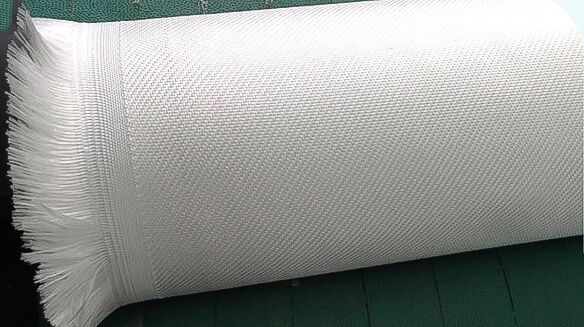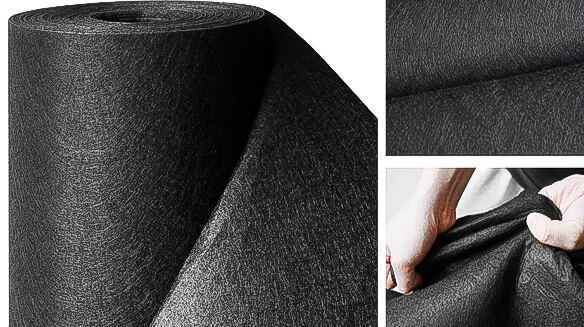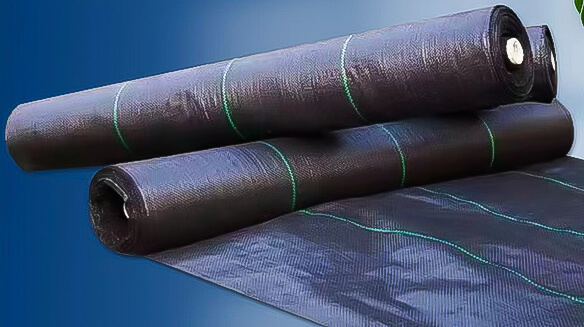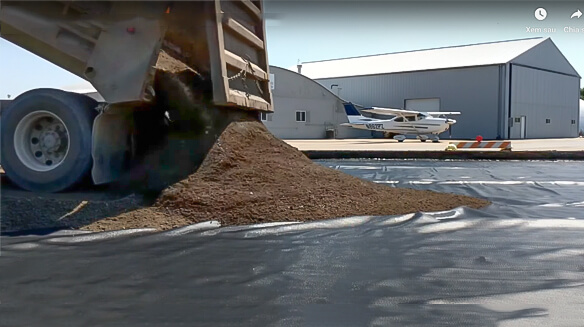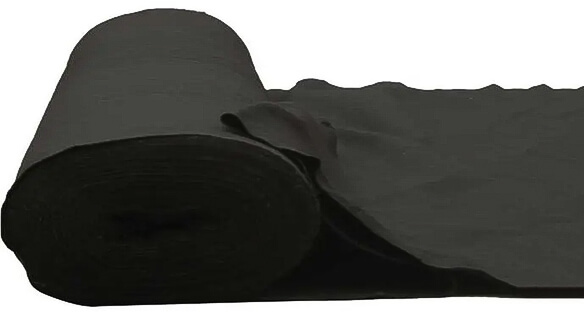Contents
- Geotextile Driveway Fabric: Chose Non-woven Geotextile Fabric
- Introduction
- What is Geotextile Driveway Fabric?
- Advantages of Non-Woven Geotextile Fabric for Driveway Erosion Control
- Exploring the Benefits of Non-woven Geotextile Fabric in Driveway Construction
- Different Types of Geotextile Driveway Fabric
- Understanding Non-woven and Woven Fabrics: Enhancing Driveways and Road Surfaces
- Why Gravel Driveways Prefer High-Quality Geotextile Fabric for Longevity
- Conclusion
- FAQs
Geotextile Driveway Fabric: Chose Non-woven Geotextile Fabric
Meta: Discover the benefits of Non-Woven Geotextile Fabric for stabilizing and protecting gravel driveways. Learn how this specially designed material improves drainage, prevents erosion, and controls weed growth to ensure a durable and low-maintenance driveway.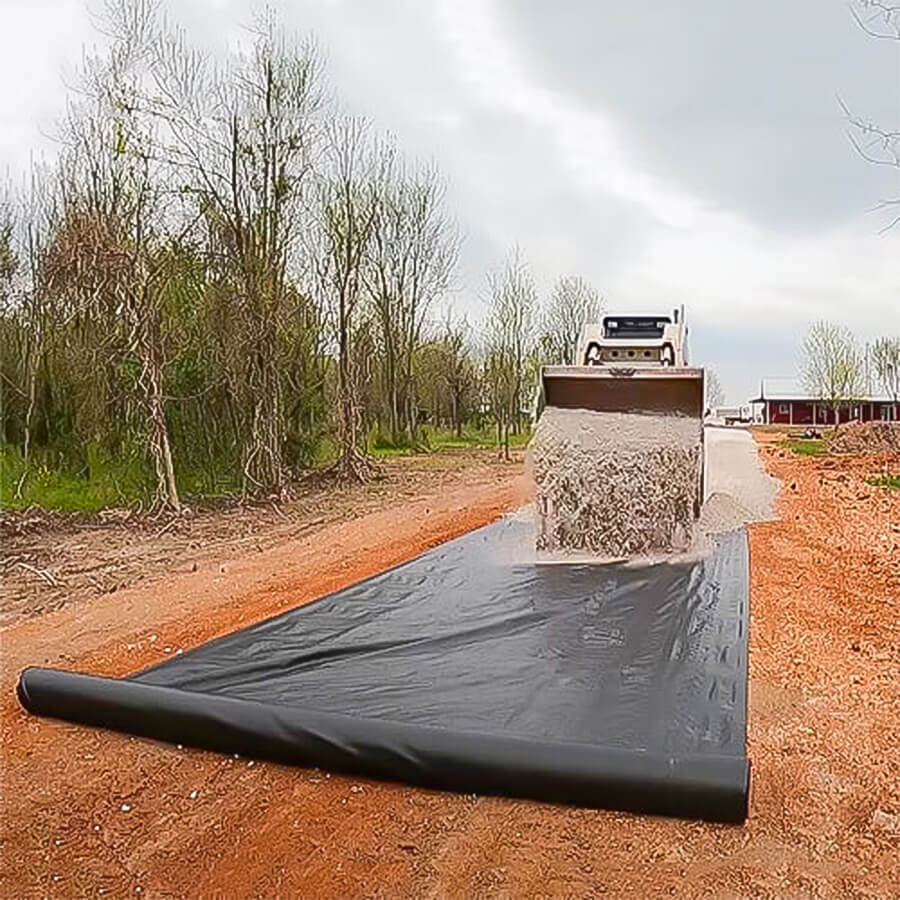
Introduction
Gravel driveways often face challenges such as rutting, erosion, and weed growth, leading to frequent maintenance for homeowners. To address these issues and ensure the longevity of gravel driveways, Non-Woven Geotextile Fabric has emerged as an ideal solution. In this article, we will explore the advantages of using Non-Woven Geotextile Fabric in driveway construction, offering valuable insights for homeowners and construction professionals alike.
What is Geotextile Driveway Fabric?
Geotextile driveway fabric is a specialized fabric employed for reinforcement, stabilization, and the preservation of various land surfaces like driveways. Manufactured from top-grade polymers, it provides robust tensile strength that helps prevent potholes and displacement of pavement layers.
The fabric serves as a separating layer between subgrades, like soil and gravel. This minimizes subsurface damage from ground shifts and enhances drainage post-heavy rain or snowfall. This further strengthens the structural stability of land surfaces.
Two types of geotextile fabrics are available – woven and non-woven. Each type has unique features, making them suitable for different applications. Woven fabrics boast increased strength, while commercial grade offers superior tensile strength for heavy-duty projects like airport runways.
However, Non-Woven Geotextiles are the preferred choice for paved roads due to their potent mechanical properties and excellent dimensional stability. This ensures longevity, even with high traffic volumes.
This fabric provides robust support beneath hardscape features, extending their lifespan. It aids in weed control, soil particle stabilization, erosion protection, and improved water flow. It also contributes to energy-efficient paving solutions, ensuring quality control and potentially reducing large repair bills due to inadequate material selection.
In conclusion, Geotextile driveway fabric is a cost-effective, efficient solution for land surface preservation and reinforcement. It not only saves money but also boosts customer satisfaction by avoiding repeat repairs and delivering a safe and accurate job the first time.
Advantages of Non-Woven Geotextile Fabric for Driveway Erosion Control
The landscape fabric industry has evolved significantly, especially in the realm of driveway erosion control. This evolution has led to a variety of high-quality geotextile driveway fabric options. Among these, non-woven geotextile fabric takes the crown. Designed for efficiency and versatility, it offers numerous benefits including effective erosion control, driveway longevity, and maintained aesthetics.
One key benefit of non-woven geotextile fabric is its resilience in harsh environmental conditions. Unlike its woven counterpart, it withstands severe conditions without unraveling, ensuring enduring effectiveness. This resilience underlines its superior quality.
The strength of non-woven geotextile fabric is unmatched. It offers excellent stability and extends the life of your driveway. In terms of durability, it outperforms traditional fabrics, making it a cost-effective solution for homeowners. It’s a practical choice for long-term landscape and driveway erosion management.
Enhanced Water Flow Control and Aesthetic Appeal with Non-Woven Geotextile Fabric
Furthermore, the non-woven fabric promotes optimal water flow. It aids proper drainage, prevents waterlogging, and forms a robust barrier controlling water flow. By maintaining the integrity of the underlying soil, it helps prevent driveway issues related to water damage.
Despite its strength, non-woven geotextile fabric is flexible and easy to install. It fits around any obstacle or contour, making driveway projects less strenuous and time-consuming. It optimizes landscape fabric efficiency like never before.
Its versatility shines through when applied to different driveway types. Whether it’s a gravel or a concrete driveway, the non-woven fabric ensures seamless integration. This versatility gives non-woven geotextile an edge over woven varieties.
Aesthetically, non-woven geotextile fabric driveways exhibit a clean, professional look. They add a unique charm to your landscape, distinguishing it from those with woven or standard fabrics.
In conclusion, if you’re seeking an effective driveway erosion solution, non-woven geotextile fabric stands out. With advantages like unmatched strength, water flow control, easy installation, and aesthetic appeal, it’s a clear winner. Whether your need is fabric-specific or driveway-oriented, the benefits of high-quality non-woven geotextile fabric are hard to ignore. It’s truly the top choice for driveway fabrics.
Exploring the Benefits of Non-woven Geotextile Fabric in Driveway Construction
Driveway construction calls for high-quality materials to ensure durability and resistance against wear and tear. Among these, non-woven geotextile driveway fabric stands as an exceptional choice, offering a seamless installation process and dependable performance. This fabric, distinct from its woven counterpart, brings unique benefits to the table.
Known for its robustness and durability, it’s the go-to material for high-traffic areas like driveways. Moreover, non-woven geotextile fabric outperforms others in providing outstanding driveway performance due to its superior water filtration capability. It allows water to pass through, preventing puddle formation and minimizing the risk of driveway erosion.
Different Types of Geotextile Driveway Fabric
There are three main types of geotextile fabric used in driveways: woven fabric, non-woven fabric, and commercial-grade fabric, each with its own advantages.
Woven fabric
Woven geotextiles are a preferred choice in driveway construction for their impressive load capacity and tensile strength. Their suitability lies in road stabilization and separation. These fabrics can bear hefty loads and permit minimal stretching, making them perfect for long-lasting driveways that don’t require frequent maintenance.
The incredible stability woven fabrics provide reduces road damage over time. Hence, it’s a common choice to employ commercial-grade woven geotextiles on highways or public roads. These fabrics also have the edge of preventing the mixture of varying soil types at different construction depths. This is beneficial in projects like bridge and retaining wall construction, as it significantly lowers the risk of ground subsidence and potentially expensive repairs in the future.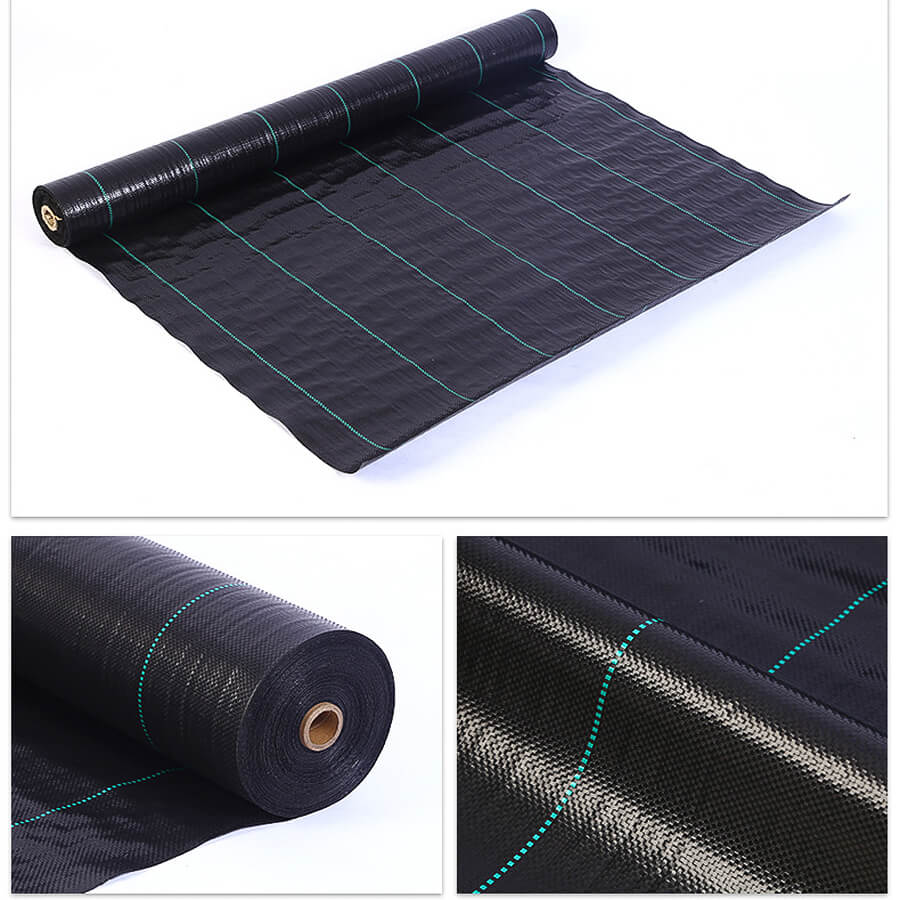
Non-woven fabric
Non-woven geotextile fabric, composed of interlinked polypropylene filaments, offers durability and strength to driveway construction. This fabric supports ground stabilization and separation of sub-base layers, aggregates, and other materials.
Its superior drainage properties keep paths water-free while allowing easy passage of soil particles. This ensures smooth road construction activities with minimal disturbances.
The versatility of non-woven fabrics extends to landscape designs and solutions for French drains. These fabrics are robust enough to manage channels for liquid or gas, mitigating issues caused by flash floods or soil erosion.
For weed control, these fabrics excel. They cover areas, subduing unwanted roots and preventing future overgrowth. This helps maintain your driveway free from vegetation-related problems.
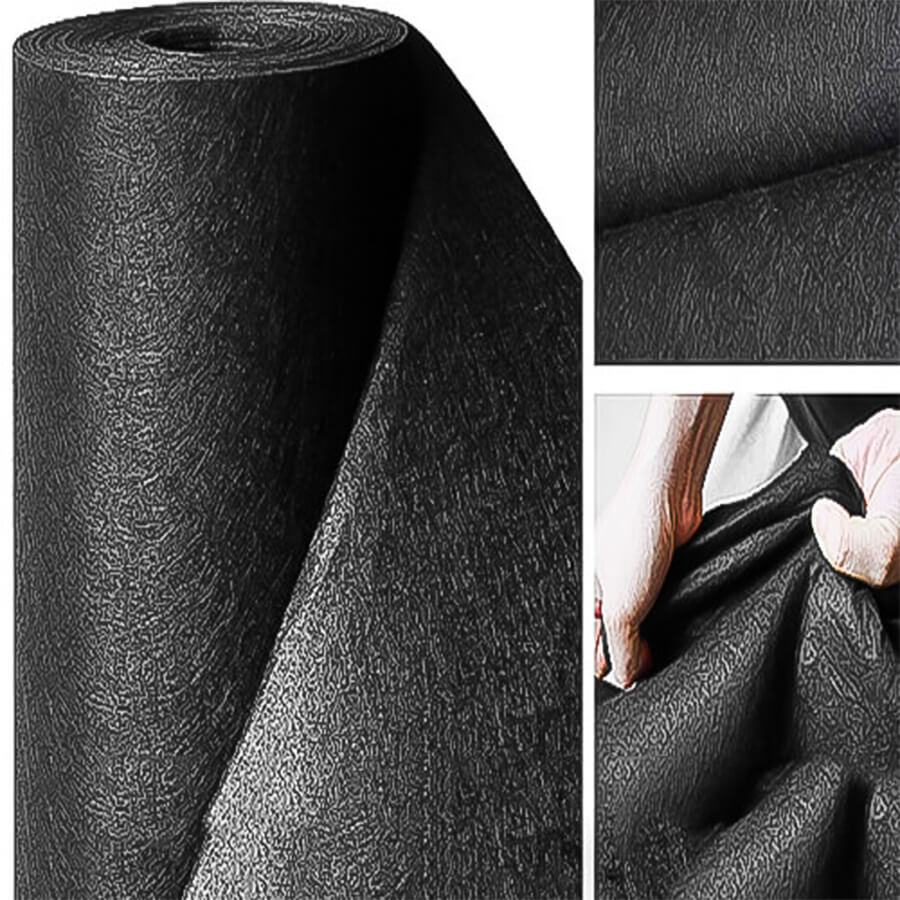
Commercial-grade fabric
Commercial-grade Geotextile Road Fabric is a robust, heavy-duty material ideal for road construction and driveways. It safeguards the subgrade soil, bolsters stability, and controls erosion.
This fabric primarily comes in two varieties: woven and non-woven. Woven geotextile fabric, known for its high load capacity and tensile strength, is apt for heavy industrial applications. In contrast, non-woven fabrics are more recognized for their filtration properties over mechanical strength.
The substantial thickness of these materials lends longevity to driveways and landscape areas where applied. It also amplifies the durability of any stone paver product atop it. This is due to its capacity to minimize shifting and curtail weed growth from beneath pavers.
Non-woven geotextiles also showcase eco-friendly attributes. They facilitate similar soil separations with fewer pollutants entering the environment compared to other products when installed correctly.
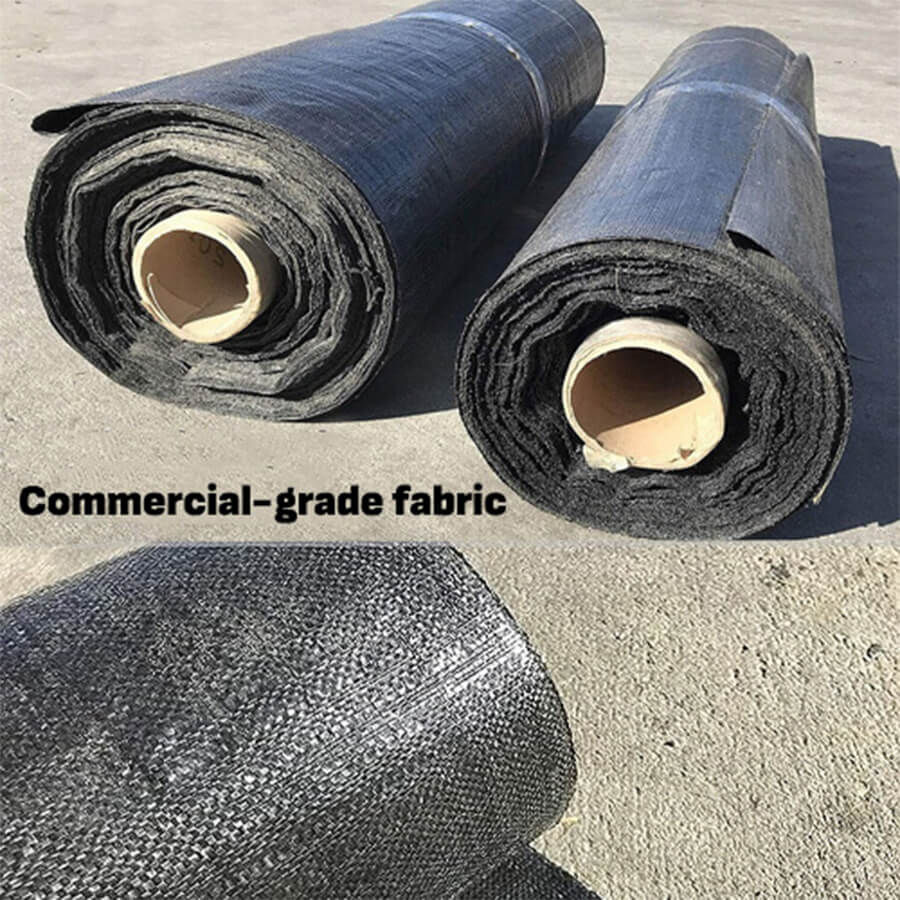
Understanding Non-woven and Woven Fabrics: Enhancing Driveways and Road Surfaces
Using the right geotextile fabric for your driveway or road surface can provide long-term functionality, durability, and longevity.
It’s essential to understand the unique characteristics and applications of both woven and non-woven fabrics to make the optimal choice for your project. Woven geotextile fabric, created by interweaving threads, boasts high tensile strength, making it perfect for heavy load-bearing areas like roads and driveways.
Non-woven geotextile fabric, on the other hand, is known for its superior drainage properties and high water flow rates, making it ideal for filtration and separation applications.
Implementing Geotextile Fabrics in Driveway Construction and Maintenance
When planning a driveway project, using a geotextile fabric can significantly enhance the durability and longevity of the construction.
Whether woven or non-woven, a control fabric underneath the gravel effectively stabilizes the area, preventing the mixing of gravel and soft ground. This significantly lessens the chance of rutting and pothole formation, saving potential repair expenses in the future.
It’s crucial to understand the unique properties, capabilities, and appropriateness of the chosen fabric for your specific project. This approach allows you to make an informed choice, ensuring your driveways and road surfaces maintain stability, durability, and quality for years to come.
Why Gravel Driveways Prefer High-Quality Geotextile Fabric for Longevity
The construction industry has been buzzing about high-quality geotextile driveway fabric, with homeowners and industry experts alike seeing its immense value.
This premium fabric is particularly effective for reinforcing gravel driveways, as it offers enhanced stability and durability. Geotextile fabric, specifically woven grades, form a reinforced mat beneath the driveway, creating a stable base that can withstand heavy traffic without succumbing to pressure.
This prevents the formation of ruts and displacement of gravel, common issues in gravel driveways due to heavy vehicular traffic.
Additional Applications of Geotextile Fabric and Its Installation Process
Aside from their main application in gravel driveways, geotextile fabrics also serve other purposes, such as constructing egress window wells and forming pipe bollards, effectively preventing soil erosion and protecting infrastructures. The installation process of geotextile fabric is relatively straightforward and cost-effective.
These fabrics often come in large rolls, suitable for covering extensive driveway surface areas, and can withstand a range of weather conditions. In conclusion, investing in top-grade geotextile driveway fabric not only ensures a robust and durable driveway but also provides the peace of mind that it will stand the test of time.
Conclusion
Non-Woven Geotextile Fabric proves to be an indispensable asset for enhancing gravel driveways. Its ability to stabilize the ground, prevent erosion, control weed growth, and improve drainage ensures long-lasting results and reduces the need for frequent maintenance. By choosing high-quality Non-Woven Geotextile Fabric, homeowners can enjoy robust and durable driveways, free from common issues associated with gravel surfaces.
FAQs
1. What is geotextile driveway fabric?
Geotextile Driveway Fabric is a layer of permeable material that helps to protect paved or gravel driveways from damage caused by moisture, frost, and heavy traffic. It acts as a filter to keep soil particles away while allowing water to pass through it, making it both durable and functional for years into the future.
2. How does geotextile driveway fabric work?
Geotextile Driveway Fabric works by providing an extra layer of protection on top of the existing base layer of your driveway. This fabric will form a separation between the sub-grade surface materials such as sand and gravel, helping to prevent unwanted settling or shifting over time due to weather and vehicular traffic.
3. What are the benefits of using geotextile fabric?
Using Geotextile Driveway Fabric offers several advantages including increased durability in exchange for lower costs; improved water drainage due to its breathability; added structural support & stabilization which can help reduce long-term maintenance expenses; better resistance against weed growth, sun exposure & ice/snow accumulation when compared with traditional methods like asphalt paving; plus easier installation leading directly too faster turnaround times overall!
4. Is geotextile driveway fabric necessary in every situation?
Not necessarily – depending on your specific requirements there may be other solutions available that could potentially suffice without investing additional resources into purchasing & installing this type of product such as strategically placed aggregates (i.e., stone chips); however, if you’re looking for maximum protection then opting for this specialized fabrication can certainly provide peace mind knowing every base been covered from start finish!

